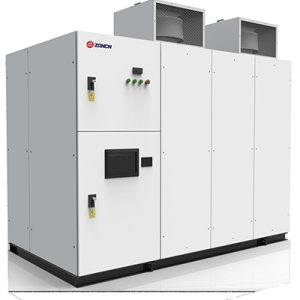
High-voltage inverters are widely used in industrial scenarios such as metallurgy, electricity, and chemical industry, and are mainly used for variable frequency speed regulation of high-voltage AC motors. As the main core product in the field of industrial transmission, it is particularly important for high-voltage inverters to maintain a stable and reliable operating state. Therefore, in order to reduce the accidental shutdown of the inverter due to improper maintenance of the inverter or poor on-site operating environment, it is necessary to strengthen the daily inspection and maintenance of the inverter.
High-voltage safety precautions are as follows:
During maintenance, the high voltage needs to be cut off, and the indicator light needs to be checked before replacement or measurement to ensure that all power units are completely turned off;
The output insulation of the inverter cannot be measured with a high-voltage measuring instrument, otherwise the switch of the power unit will be damaged;
When measuring the insulation of the motor with an insulation meter, first disconnect the cable between the output terminal of the inverter and the motor;
Do not connect the high-voltage power supply to the output terminal of the inverter by mistake, which will cause the internal components of the inverter to explode;
During the transformer withstand voltage test, all power units need to be disconnected from the inverter, the temperature controller is disconnected from the temperature measuring line, and the temperature measuring probe is removed from the transformer temperature measuring tube and away from the transformer body.
What are the things that usually need to be checked daily?
Regular cleaning: Clean the inverter housing and radiator to ensure good heat dissipation and prevent dust, dirt and debris from accumulating and affecting heat dissipation performance.
Check the wiring: Check the inverter wiring to ensure that the connection is firm, not loose or oxidized, and avoid abnormal operation or damage of the equipment due to wiring faults.
Check electrical components: Check the appearance and connection status of electrical components (such as capacitors, resistors, relays, etc.) to find out whether there are cracks, deformation or poor contact.
Measure electrical parameters: Measure the electrical parameters of the inverter, including input and output voltage, current, frequency, etc., to monitor the operating status and performance changes of the equipment.
Check the cooling system: Check the working status of the cooling system, including fans, heat sinks and cooling water circuits, to ensure good heat dissipation and avoid overheating and damage to the equipment.
Calibration of control parameters: Calibrate the control parameters and adjustment functions of the inverter to ensure that they match the actual needs and improve the stability and response speed of the system.
Replacement of Spare Parts: Replace wearing and aging parts, such as fans, capacitors, resistors, etc., regularly according to the maintenance cycle recommended by the manufacturer to ensure the reliability and safety of the equipment.
Record maintenance information: Record the maintenance information and operation data of the inverter, including maintenance date, maintenance content, equipment operation status, etc., to provide reference for subsequent troubleshooting and maintenance plan.
Check the system ground wire: Regularly check the earth wire of the system to ensure that the grounding system is good to prevent power leakage and safety accidents.
Check Software and Firmware Updates: Regularly check the software and firmware versions of the inverter, and make timely updates and upgrades to obtain the latest features and safety improvements.
Under reasonable maintenance, the frequency converter can give full play to its function, prolong its service life, reduce the incidence of malfunction, and then reduce the cost of malfunction repair. In addition to the above general daily inspection and maintenance items, the staff must be combined with the actual operation of the frequency converter, reasonably formulate the frequency converter repair and maintenance programme, and regularly carry out the repair and maintenance of the frequency converter.

